Denmark won today’s unoffical World Cup race in sprint relay in the very tricky artificially built labyrinth-like streets of Imatra. Emma Klingenberg, Tue Lassen, Søren Bobach and Maja Alm run in the Danish team.
Sweden had a clear 25 second lead on Denmark after three legs – Jonas Leandersson doing a great race. On the last leg the fight was between Sweden’s Lena Eliasson and Denmark’s Maja Alm.
Eliasson did several mistakes and wrong routechoices between all the fences building up the Imatra labyrinth, and Alm could in the end run in to a clear victory. In the end even Sweden’s second team with Tove Alexandersson passed Eliasson – finishing 24 seconds behind Denmark.
Comment: Too much of the good?
Again there were a lot of fences – and a lot of forking – the exact opposite of the first unofficial World Cup relay in Turkey earlier this year were the runners and spectators complained that there was not enough forking – and that the orienteering was too easy.
In theory both forking and complex route choices are a good thing in these types of relays, but in this race the Finnish organizers probably listened too much to the comments after the Turkey mixed sprint relay. Now it was very difficult to understand who was in the lead – and to spot when the mistakes and wrong route choices were done – and even after the relay it is difficult to know if the different alternatives were really equal time-wise and who missed where.
Due to the complex forking, TV commentators (and probably most spectators) missed some of the key points in the relay, like for example Lena Eliasson’s large mistake on the second control on the last leg, her wrong route choice towards the end of the first loop, the wrong route choice (I think) of Emma Klingenberg on the first leg, and so on. There was simply too much happening. But for the runners, this must have been great fun!
Maps and GPS-tracking
- First leg (women)
- Second leg (men)
- Third leg (men)
- Fourth leg (women)
Results
| 1 | 2 | Denmark | DEN | 53:22 | |||
| 1 Emma Klingenberg | 13:49 | 4. | |||||
| 2 Tue Lassen | 12:58 | 1. | 26:48 | 3. | |||
| 3 Søren Bobach | 13:17 | 4. | 40:05 | 2. | |||
| 4 Maja Alm | 13:16 | 1. | 53:22 | 1. | |||
| 2 | 3 | Sweden 2 | SWE | 53:46 | |||
| 1 Alva Olsson | 13:40 | 2. | |||||
| 2 William Lind | 13:47 | 11. | 27:28 | 5. | |||
| 3 Gustav Bergman | 12:59 | 2. | 40:27 | 3. | |||
| 4 Tove Alexandersson | 13:19 | 2. | 53:46 | 2. | |||
| 3 | 1 | Sweden | SWE | 53:51 | |||
| 1 Annika Billstam | 13:42 | 3. | |||||
| 2 Jerker Lysell | 13:00 | 2. | 26:43 | 1. | |||
| 3 Jonas Leandersson | 12:57 | 1. | 39:40 | 1. | |||
| 4 Lena Eliasson | 14:11 | 7. | 53:51 | 3. | |||
| 4 | 5 | Switzerland | SUI | 54:32 | |||
| 1 Rahel Friedrich | 13:52 | 5. | |||||
| 2 Florian Howald | 13:40 | 9. | 27:32 | 6. | |||
| 3 Andreas Rüedlinger | 13:40 | 10. | 41:13 | 8. | |||
| 4 Judith Wyder | 13:19 | 3. | 54:32 | 4. | |||
| 5 | 12 | Great Britain | GBR | 55:14 | |||
| 1 Tessa Hill | 14:00 | 8. | |||||
| 2 Murray Strain | 13:27 | 3. | 27:27 | 4. | |||
| 3 Scott Fraser | 13:22 | 5. | 40:49 | 5. | |||
| 4 Catherine Taylor | 14:24 | 10. | 55:14 | 5. | |||
| 6 | 4 | Finland | FIN | 55:20 | |||
| 1 Marika Teini | 14:29 | 17. | |||||
| 2 Severi Kymäläinen | 13:35 | 5. | 28:05 | 11. | |||
| 3 Mårten Boström | 13:09 | 3. | 41:14 | 9. | |||
| 4 Venla Niemi | 14:05 | 6. | 55:20 | 6. | |||
| 7 | 23 | Sweden 4 | SWE | 55:54 | |||
| 1 Lilian Forsgren | 14:01 | 10. | |||||
| 2 Jakob Lööf | 13:39 | 6. | 27:41 | 9. | |||
| 3 Emil Svensk | 13:31 | 7. | 41:12 | 7. | |||
| 4 Josefin Engström | 14:42 | 11. | 55:54 | 7. | |||
| 8 | 19 | Switzerland 2 | SUI | 55:57 | |||
| 1 Elena Roos | 13:59 | 7. | |||||
| 2 Jonas Mathys | 13:51 | 13. | 27:51 | 10. | |||
| 3 Alain Denzler | 13:45 | 12. | 41:36 | 10. | |||
| 4 Julia Gross | 14:21 | 9. | 55:57 | 8. | |||
| 9 | 7 | Finland 2 | FIN | 55:58 | |||
| 1 Sofia Haajanen | 13:56 | 6. | |||||
| 2 Tuomo Mäkelä | 13:39 | 8. | 27:35 | 7. | |||
| 3 Antti Anttonen | 14:01 | 18. | 41:37 | 11. | |||
| 4 Anna Närhi | 14:21 | 8. | 55:58 | 9. | |||
| 10 | 10 | Sweden 3 | SWE | 56:02 | |||
| 1 Lina Strand | 14:41 | 20. | |||||
| 2 Martin Regborn | 13:42 | 10. | 28:23 | 13. | |||
| 3 Oskar Sjöberg | 13:52 | 15. | 42:16 | 13. | |||
| 4 Karolin Ohlsson | 13:45 | 4. | 56:02 | 10. | |||
| 11 | 24 | Mixed 3 | MIX | 56:04 | |||
| 1 Nadiya Volynska | 13:19 | 1. | |||||
| 2 Yannick Michiels | 13:28 | 4. | 26:47 | 2. | |||
| 3 Ross Morrison | 13:43 | 11. | 40:31 | 4. | |||
| 4 Laura Roberdson | 15:33 | 17. | 56:04 | 11. | |||
| 12 | 16 | Mixed | MIX | 56:30 | |||
| 1 Ruth Holmes | 14:01 | 9. | |||||
| 2 Robert Merl | 13:39 | 7. | 27:40 | 8. | |||
| 3 Peter Hodkinson | 13:26 | 6. | 41:07 | 6. | |||
| 4 Laura Ramstein | 15:23 | 15. | 56:30 | 12. | |||
| 13 | 6 | Russia | RUS | 56:52 | |||
| 1 Anastasia Tikhonova | 14:27 | 15. | |||||
| 2 Alexey Sidorov | 14:40 | 21. | 29:07 | 20. | |||
| 3 Dimitry Polyakov | 13:51 | 14. | 42:59 | 18. | |||
| 4 Galina Vinogradova | 13:53 | 5. | 56:52 | 13. | |||
| 14 | 21 | Mixed 6 | MIX | 57:04 | |||
| 1 Heidi Bagstevold | 14:12 | 13. | |||||
| 2 Kiril Nikolov | 14:06 | 15. | 28:19 | 12. | |||
| 3 Nicholas Oskarsson | 13:33 | 8. | 41:52 | 12. | |||
| 4 Heidi Mårtensson | 15:11 | 14. | 57:04 | 14. | |||
| 15 | 14 | Denmark 2 | DEN | 57:39 | |||
| 1 Stine Bagger Hagner | 14:25 | 14. | |||||
| 2 Andreas Hougaard Boesen | 14:15 | 16. | 28:40 | 15. | |||
| 3 Jakob Ekhard Edsen | 13:48 | 13. | 42:29 | 14. | |||
| 4 Nicoline Klysner | 15:10 | 13. | 57:39 | 15. | |||
| 16 | 13 | Poland | POL | 57:45 | |||
| 1 Ewa Gwozdz | 14:56 | 22. | |||||
| 2 Bartosz Pawlak | 13:51 | 12. | 28:47 | 16. | |||
| 3 Rafal Podzinski | 13:57 | 16. | 42:45 | 17. | |||
| 4 Agata Stankiewicz | 15:00 | 12. | 57:45 | 16. | |||
| 17 | 8 | France | FRA | 58:06 | |||
| 1 Isia Basset | 14:32 | 19. | |||||
| 2 Philippe Adamski | 14:28 | 19. | 29:01 | 18. | |||
| 3 Frédéric Tranchand | 13:36 | 9. | 42:37 | 15. | |||
| 4 Lea Vercellotti | 15:29 | 16. | 58:06 | 17. | |||
| 18 | 25 | Mixed 4 | MIX | 58:34 | |||
| 1 Ingrid Myhre | 14:09 | 12. | |||||
| 2 Otto Simosas | 14:19 | 17. | 28:28 | 14. | |||
| 3 Olli-Pekka Koistinen | 14:13 | 20. | 42:42 | 16. | |||
| 4 Lilly Gross | 15:52 | 18. | 58:34 | 18. | |||
| 19 | 20 | Finland 3 | FIN | 59:34 | |||
| 1 Maija Sianoja | 14:32 | 18. | |||||
| 2 Vili Niemi | 14:35 | 20. | 29:07 | 19. | |||
| 3 Jesse Laukkarinen | 14:01 | 17. | 43:08 | 20. | |||
| 4 Julia Björkstrand | 16:25 | 21. | 59:34 | 19. | |||
| 20 | 11 | Estonia | EST | 1:01:07 | |||
| 1 Evely Kaasiku | 16:44 | 23. | |||||
| 2 Sander Vaher | 14:00 | 14. | 30:44 | 22. | |||
| 3 Kenny Kivikas | 14:18 | 21. | 45:03 | 21. | |||
| 4 Liis Johanson | 16:04 | 19. | 1:01:07 | 20. | |||
| 21 | 15 | Estonia 2 | EST | 1:01:32 | |||
| 1 Annika Rihma | 14:53 | 21. | |||||
| 2 Kristo Heinmann | 15:03 | 22. | 29:57 | 21. | |||
| 3 Sergei Rjaboskin | 15:21 | 22. | 45:18 | 22. | |||
| 4 Kirti Rebane | 16:14 | 20. | 1:01:32 | 21. | |||
| 22 | 22 | Switzerland 3 | SUI | 1:03:05 | |||
| 1 Bettina Aebi | 14:28 | 16. | |||||
| 2 Florian Schneider | 14:26 | 18. | 28:54 | 17. | |||
| 3 Kaspar Hägler | 14:10 | 19. | 43:05 | 19. | |||
| 4 Brigitta Mathys | 19:59 | 22. | 1:03:05 | 22. | |||
| – | 9 | Norway | NOR | DQ | |||
| 1 Emma Johansson | 14:07 | 11. | |||||
| 2 Ulf Indgaard | DQ | ||||||
| 3 Gaute Hallan Steiwer | – | ||||||
| 4 Gøril Rønning Sund | – | ||||||
| – | 17 | Norway 2 | NOR | DQ | |||
| 1 Silje Jahren | DQ | ||||||
| 2 Øystein Kvaal Østerbø | – | ||||||
| 3 Bjørn Ekeberg | – | ||||||
| 4 Anne Lind | – | ||||||
| – | 18 | Mixed 2 | MIX | DQ | |||
| 1 Anastasia Potapenko | DQ | ||||||
| 2 Sergey Gorokhov | – | ||||||
| 3 Aleksi Niemi | – | ||||||
| 4 Natalia Vinogradova | – | ||||||
| – | 26 | Mixed 5 | MIX | DNS | |||
| 1 Helena Jansson | DNS | ||||||
| 2 | – | ||||||
| 3 Ivan Sirakov | – | ||||||
| 4 | – | ||||||
 World of O News
World of O News

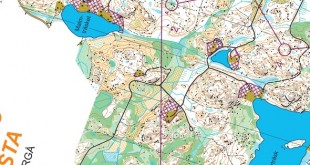
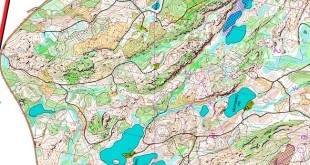
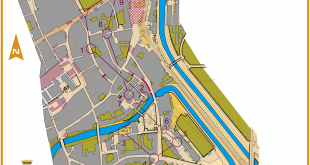
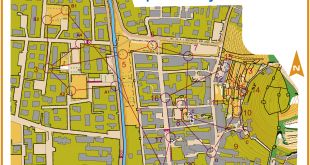
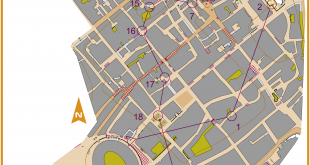
In my opinion such legs like 5-6 are to much. Its more like a labyrinth. The last loop (after arena passage) was better. Specially the longer one for the men.
I think that from a spectator/TV point of view, some (or one) legs of these types are OK, but now it was simply too complex to follow. For the runners, I am sure it was a lot of fun. But I guess the main idea of the mixed sprint relay is not to have fun, but to entertain…?
The main goal of IOF is to entertain spectator/TV. Its not about how much fun it is for the runners. And it also seems like not all of them like it that much. And like you mentioned in the article, they missed the things happening. (like the big miss of NOR1 at the last loop of leg4, she was totaly lost there)
The big miss of NOR1 on the last leg was not really of any interest, as NOR1 was DSQ’ed already on the 2nd leg… But they missed other important things. And that was not because the production was bad, but because it was very difficult to grasp everything…
Oh I see. Yes, you needed to use replay of gps tracking to find out why some of the runner lost time. And sometimes review it even twice or three times. Thats a big problem in Sprint anyway. There is to much happening at the same time and in a short time. (And mostly even bad gps signals wich make it even harder to spot mistakes and show them in TV)
As a runner I personally think that both todays and yesterdays sprint were great. It is my impression that many runners share this opinion. Thanks to the finish organizers for being crazy and genius! It was very tricky, yes, but why can’t it be? I understand that it can be hard to follow for spectators, but at least you can always see who crosses the finish line first ;)
Thanks a lot for the comment, Emma. And yes, I am sure it was great for the runners! A lot of fun challenges all the way – nothing like the sprint relay in Turkey. And for the individual race, I think it worked very well.
The relay is were I saw some problems. I think that the combination of extensive forking (especially around the first four controls) and all the route choice options makes it too difficult to follow the race. There is a “black hole” in the course between the start and control 5 where you have no idea about the standings. When you can’t see where the runners do mistakes, it is very difficult to tell the story of the race – and to understand why the winners are the winners. If you don’t manage to bring that on to the spectators/viewers during a race/broadcast, I think it is too complicated.
With this many route choices, it would not have been necessary with this much forking. Actually I think you could have a relay which was just as interesting for the runners – with very similar technical challenges – but with forking which would be easier to understand for the viewers. And I am quite confident we will eventually see this in this discipline – this is only the second real test of the mixed sprint relay. Unfortunately this comes a bit too late for WOC, as I am sure the courses there are already set. Ideally the World Cup test year should of course have been before the decision about introducing the relay in WOC was made…
And next time you will be running in an labyrinth, who also will be very funny….. :-(.
To put up fences to make it more more fun is horrible, and not suitable for a WOC race. If the idea to make orienteering more interesting for spectators/viewers during a race/broadcast, I think this will simply make it worse. What’s next? Building walls in the forest???
The fences are there to make it more challenging and interesting, not just for the fun. Why is this not suitable for a WOC race? Why does it make it worse for the spectators/viewers than in a race where running is the only challenge?
It did look fun and cool. And it is better than a sprint in Imatra without fences.
I think the issue is about the essence of orienteering. We are supposed to seek out good terrain, exciting places to orienteer. These can be Italian villages perched on hills or wild Irish mountains, whatever. WOC should represent this essence.
For challenge, we do contour only, corridor, window, indoor micro-sprints, et cetera. These exercises may make navigation more intense, but don’t belong in World Championships.
Jukola represents the best there is, in various ways. I believe this weekend’s races will be more inspirational for runners and (TV and arena) spectators alike.
The big question for me is why Finland would want to hold WC sprint races in the first place.
In some previous relays, the GPS tracking has been annotated with each runner’s forking combination, this makes it much more obvious when somebody is following the wrong pack/other runner.
I do agree that the controls 1-4 relay maze were everything was mixed up in a very small area made it totally impossible to figure out if/when someone made a mistake. :-(
I.e. when you have a little bad but still reasonable route choices that pass another forking it is impossible to figure out if that runner punched this control or not.
A short comment about fences and the sprint relay in Finland:
I really enjoyed running the sprint finale on Wednesday, but I think it was too many fences especially on the long legs. The routes got so complex that I was happy just to find one way through the fences and hedges at all, and when I had picked my route choice it was really difficult to run it and remember where I had planned to run. So my opinion is that the concept is very interesting and challenging, but it needs to be tuned down just a little bit. If not luck starts to play a big part.
In the sprint relay I find it difficult to judge if the forking was fair or not, but I am happy to see that the forking was gender specific! The usage of fences was about the same as in the sprint finale, and I think it would be good to tune it down a little bit, to make it more fair. What I did not like was that the course planers had put the controls crisscrossed over the map, with very narrow angles (as my 1., 2. & 3. control, as well as the last loop in the park) and that together with all the fences made it really difficult to both have the control over where it was possible to pass all the fences and at the same time keep track on which control to approach next. Additionally, it is not optimal or fair when runners are running in opposite directions around narrow corners and along fences. This is what’s happening when the courses crisscross too much and the angles between two controls are too narrow.